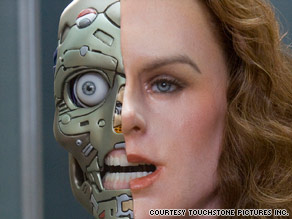A few years ago, the Science Channel aired an episode of SciFi Science, “How to Build a Lightsaber” hosted by theoretical physicist Dr. Michio Kaku. He explained some theories that might be used and developed a rough design that should be “workable in our lifetimes.” Of course almost all of his episodes end up with that qualification. Last month it looks like there was a breakthrough in the hardest part of making a lightsaber work, getting the blade to stop at a certain point.
Although the most prominent uses for controlling the depth of laser cutting are surgical and clinical, Fraser said the team is “very excited about the potential industrial applications,” especially since compared to clinics it’s easier to get new technology into industries.
Unfortunately, the goal is to make the lasers useful surgery, not chopping off alien arms at cantinas.
Via National Post
If you’d like to watch the episode I’m referring to, use this Google Search: How to build a light saber on Youtbue
